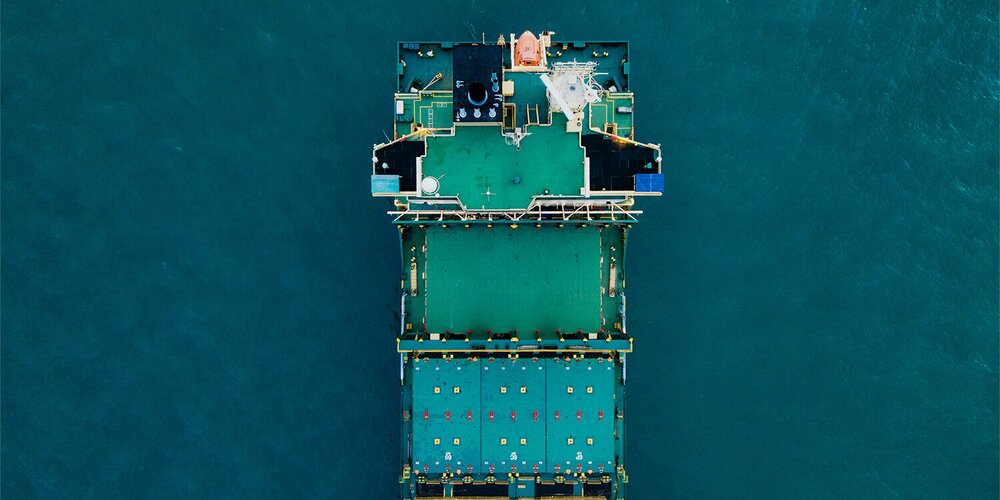Browse our services
Explore how Brookes Bell can help you
Find an expert
Meet our team, find and expert and connect
Contact us
Get in touch, we're here to help

A new report from the UCL Energy Institute Shipping and Oceans Research Group and UMAS highlights the need for high greenhouse gas (GHG) pricing and targeted e-fuel subsidies.
These measures are essential to bridge the gap between scalable zero-emission fuels like green ammonia and other early compliance options such as liquefied natural gas (LNG), biofuels, and carbon capture and storage (CCS).
The analysis came before the International Maritime Organisation (IMO) began important negotiations between February and April 2025 to finalise mid-term measures to reduce GHG emissions in shipping.
The study finds that the Global Fuel Standard (GFS) and a flexibility mechanism, even with a multiplier to boost the credit for e-fuels, are unlikely to start a transition to e-fuels before 2040.
Instead, policies with targeted incentives are needed to bridge the gap between e-fuels and low-cost early compliance options, crucial for the shipping industry's energy transition between 2027 and 2035. Without such measures, the sector risks becoming locked into alternatives that could complicate and increase the cost of achieving long-term decarbonisation goals.
This conclusion matches previous work by DNV for the IMO, which found the lowest-cost energy transition scenario combines a GFS with a high universal GHG price.
The report shows that GHG pricing starting at $150 per tonne of CO2e could generate enough revenue to support both the energy transition and a just and equitable transition for affected communities. In contrast, GHG pricing starting at $30 per tonne of CO2e is unlikely to provide the necessary support for the energy transition to start and scale through the 2027-2035 period, and certainly would not support a just and equitable transition.
“The IMO’s fuel standard is critical for the longer-term certainty of demand, and longer-run investment,” said Professor of Energy and Transport at the UCL Energy Institute, Dr Tristan Smith.
“But under this policy alone, this new analysis shows that the market will struggle to make an e-fuel business case before 2040, and therefore e-fuels such as green ammonia will not be available for shipping’s use in any volume. Some suggest that the role of a GHG levy is only for addressing equity, this study shows that it is not the only role, it is also a critical enabler of shipping’s energy transition and for minimising the long-run costs to trade”.
The study's findings directly impact the viability and cost-effectiveness of the IMO’s revised strategy targets.
With limited time for an energy transition, unless the policy can immediately start the transition to e-fuels, the sector risks falling into a cycle where the lack of a clear business case undermines investment, hampers learning and cost reduction, and stifles supply chain development. Consequently, e-fuels would remain scarce and expensive, hindering the sector’s ability to achieve its transition goals.
A clear signal from the IMO's mid-term measures could unlock long-term investment, stabilise returns and asset values, and offer numerous co-benefits, including a just and equitable transition.
“TCO modelling is a powerful tool for assessing the implications of different policy scenarios on technology and fuel choice under a compliance regime at the ship level. It can assist in testing investment decisions and optimal fuel strategies in the face of huge uncertainty over the future price and availability of alternative fuels and the efficacy of technologies. From this study, several clear themes emerge. Scenario modelling is highly sensitive to input assumptions - particularly future spreads in the abatement costs of alternative fuels,” said Senior Consultant at UMAS, Deniz Aymer.
“However, the required stringency of the global fuel standard implies that whatever mid-term measures are introduced, the early low-cost routes to compliance could become uncompetitive within a decade. The analysis also makes clear that while a global fuel standard will oblige incremental decarbonisation towards the IMO’s net-zero goals, early action taken in parallel to support e-fuels is needed to ensure that the latter half of shipping’s energy transition is less painful.”
Using the total cost of ownership (TCO) approach, the study models a 14,000 TEU container vessel with various technology and fuel options to evaluate the effects of policy combinations currently under discussion at the IMO. This includes a GHG Fuel Intensity (GFI) requirement, flexibility mechanism, and a levy and subsidy/reward mechanism.
The TCO analysis explains how fuel prices and technology costs and performance determine optimal outcomes in response to different policy scenarios. Adjustments to these assumptions can drive significantly different results from those presented in the IMO’s Comprehensive Impact Analysis.
Changes to the competitive technology and fuel combinations can fundamentally alter the expected energy mix, with ammonia becoming the most cost-effective fuel/technology choice from the mid-2030s.
Whether you need assistance dealing with bunker issues, fuel cargo quality, a forensic engineering investigation on board a vessel or loading issues, Brookes Bell’s range of fuel and fuel cargo services are perfectly positioned to help.
We employ a team of experienced, dedicated fuel and fuel cargo experts; many of whom have 30 years’ or more experience.
To learn more about our fuel and fuel cargo services, speak with our team today.
For more maritime industry insights, news and information, read the Brookes Bell News and Knowledge Hub…
Singapore Reports Sales of 1m Tonnes of Alternative Fuels in 2024 | AkzoNobel Protects Ultra Deep Sea Drilling Vessel | Pacific Basin Chooses Graphene-Based Propeller Coating to Boost Efficiency